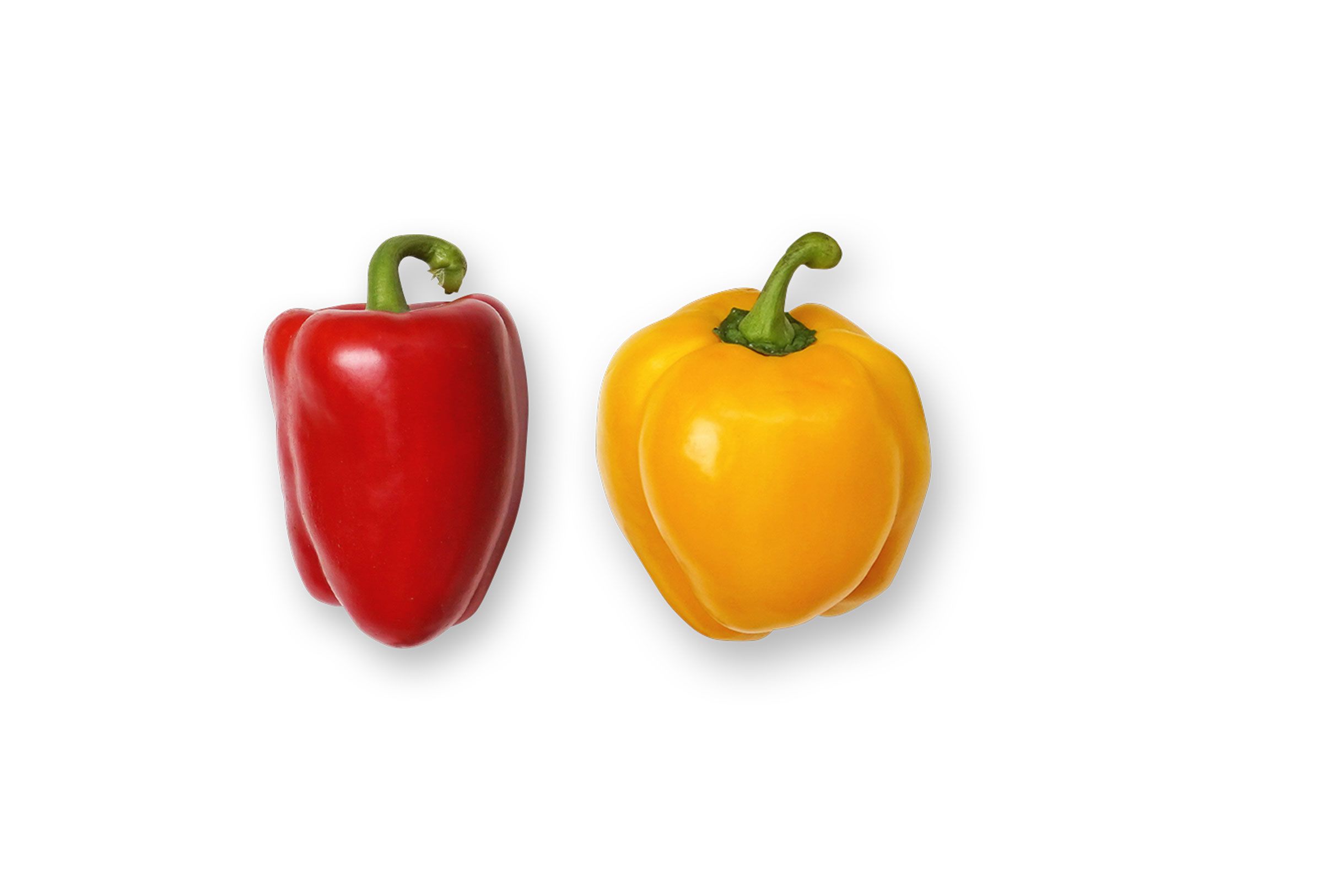Bell pepper
Colourful nutrition
Intro
Spanish colonists were the first to bring the ‘spanish pepper’ from Central and South America to Europe. This happened at the start of the 16th century. However, it wasn’t until the 1950’s that peppers were really introduced to European cuisine. More about the history of this vegetable, what varieties there are and exciting cooking opportunities, will be explained below.

What is a bell pepper?
Peppers, also known as Paprika, belong to the family of nightshade plants, along with eggplants and tomatoes. Peppers appear in a variety of sizes, colours and flavours. Their ripeness is determined by the colour. Green or violet signal that its still premature. Yellow, orange and red are associated with a sweet flavour and therefore ready to be eaten.
Red and yellow peppers are usually more popular, as the green variety has a bitter taste and is sometimes considered as hard to digest.

Where do bell peppers come from?
Peppers are originally from Central and South America, where it has been growing since 7000 BC. Colonisation caused the introduction of peppers in other parts of the world.
Which varieties are there?
Differences in the varieties are attributed to the concentration of Capsaicin. This determines the spiciness of the pepper. Read more on the benefits and characteristics of spicy food here.
Capsaicin concentration also determines whether the pepper is classified as a vegetable (regular pepper/paprika) or as a spice (pepperoni, chilli).
Of the 30+ pepper varieties that exist, only 5 are cultivated:
Block bell pepper
-Mild
-Also known as: California Wonder, Denver, Sweet Green
Pointed Pepper
-Sweet
-Also known as: Agio, Red Augsburger, Zlata, Bullhorn
Snack Pepper
-Also known as Daisy, Tribelli
Tomato Pepper
-Juicy, sweet
-Sometimes mildly spicy
Cherry Pepper/ Chilli
-Best prepared stuffed or fermented
-Also known as Coccinella
-Round and red
-Spice level: 5-6
Turkish Aroma Pepper
-Mild spice
-Enhances the aroma of a meal
-Also known as Demri Sivirsi
Pepperoni
-Spice level 3-6
-Also known as fireflame
Chilli
-Also known as de cayenne, Bhut Jolokia
-Spice level 4-10
Jalapenos
-Cylindrical
-Also known as Fundador and Jalastar
-Spice level: 6-8
Scotch Bonnet
-Also known as Caribbean Antillais, Big Sun
-Spice level: 9-10
Habaneros
-Not edible
-Also known as Habanero Orange, Habanero Red
-Spice level: 10
Ornamental Peppers
-Use due to shape and form, no aroma
-Also known as Tepin, Pequin
-Very spicy
When are peppers in season?
Mid August to October
Our tips, for how you can enjoy bell peppers:
Roasted, grilled, stewed or sauteed, stuffed,in pasta dishes, soups, casseroles, oven vegetables, lasagna or raw as a salad or sandwich topping or as a low carb chip replacement for dips
Sweet-mild peppers can be consumed raw or cooked. It can also be conserved through fermentation.
Bell Pepper Nutrition Facts per 100g:
| Typical Values | 100g |
|---|---|
| Calories | 28 |
| Fat | 0.2g |
| Carbohydrates | 6.7g |
| Fibre | 0.9g |
| Sugar | 4.4g |
| Protein | 0.9g |
Nutrients found in Bell Peppers:
Capsaicin (spice)
Vitamins:
Beta-Carotene, Folic Acid, Vitamins A, B6, C and E
Minerals:
Iron, Potassium, Copper and Magnesium
Secondary Plant Substances:
Hydroxycinnamic acids, flavonoids (quercetin) and anthocyanins

